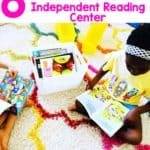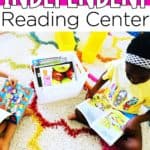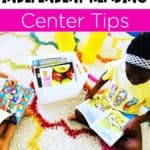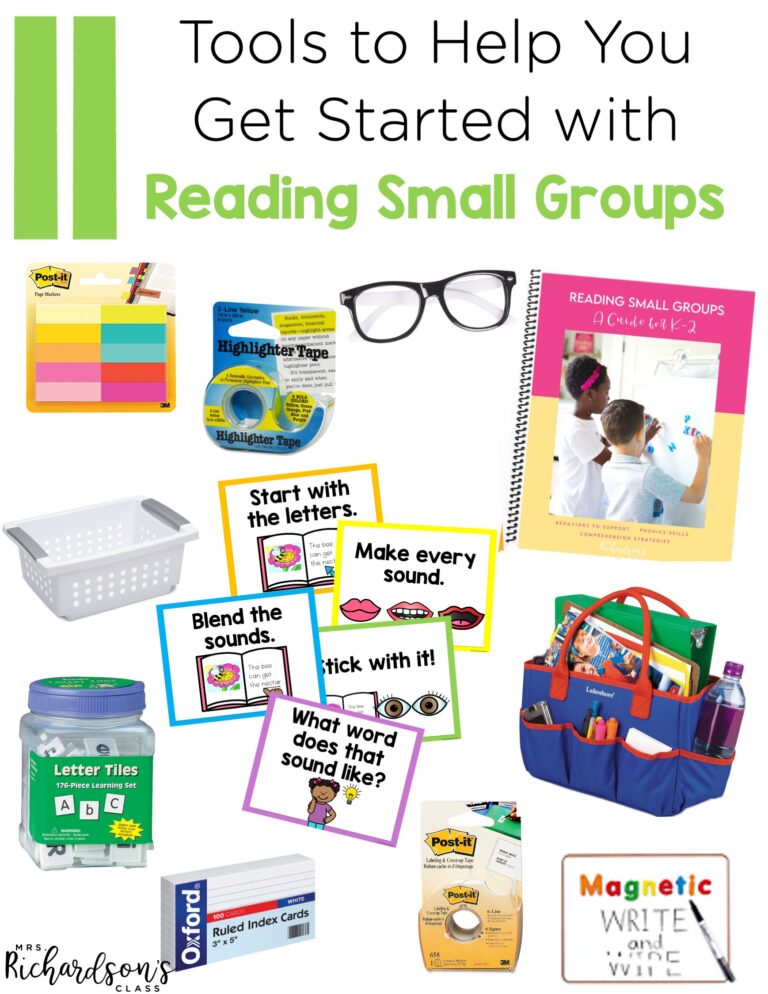


“How do I keep my kindergarten students in independent reading center for the whole time?” is one question I get asked often about literacy centers. Trust me when I tell you that you aren’t alone if you feel like this center is equivalent to herding wild cats. Keeping five and six-year-olds in an independent reading center for 15 minutes and keeping them engaged in it is hard. However, with some practice and routines, they can do it!
Independent reading center functions to help them cultivate a love of reading and practice reading. An added benefit of an independent reading center is students get to practice booking shopping, returning books to correct spots, and reading quietly (whispering or silently).
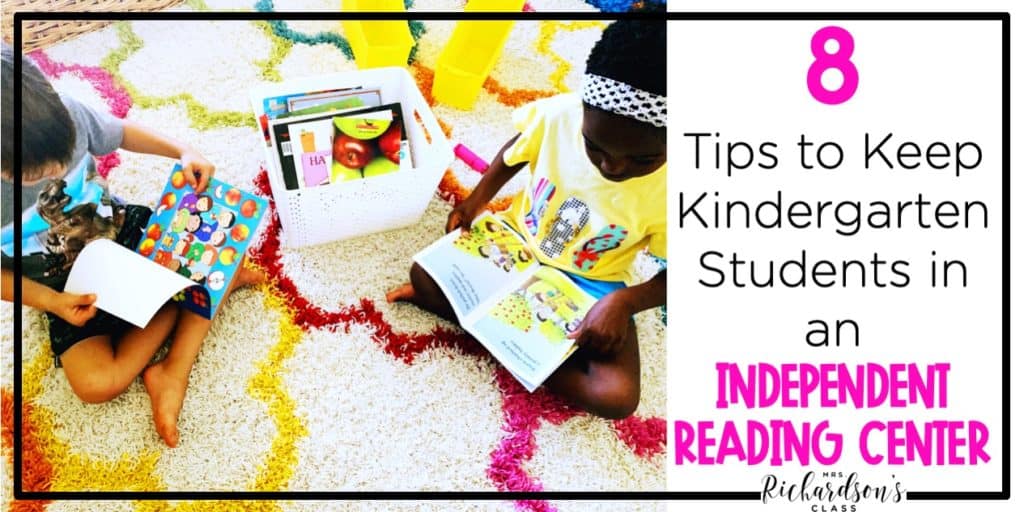
Teaching students how to use this center and stay in it will greatly benefit them, and not having to constantly redirect students in this center will greatly benefit you. I’ll share my favorite tips to make this center successful!
There is no wrong way to implement this center. Some teachers like to set it up in the classroom library, and some like to have kindergarten students read from book tubs at their table. No matter how you decide to do it, just make sure students know the expectations.
For example, you might have them choose three books from the classroom library and get their book box to read from. Then, they can read in the class library or at their tables. The goal is for students to practice reading independently. If you have them do that, you are doing it correctly!
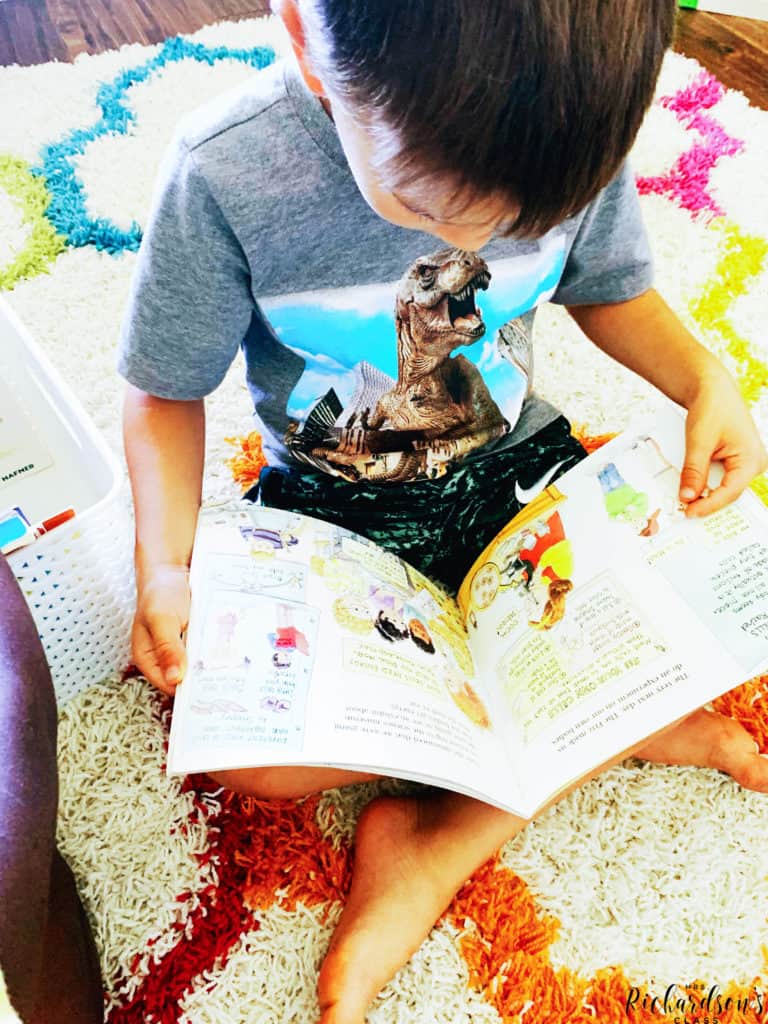
One teacher I know used a sand timer to help students know when to start reading. She would stick with a three-minute timer or a five-minute timer. When they first arrive in the center, they flip the timer over. That’s how long they have to choose their books.
When the sand runs out, they have to start reading. This structure can help those little readers who could take all day choosing the best books. Plus, they all love getting to be the one to flip the timer!
This helps your students know where to find books they might be looking forward to reading and find topical books they might be interested in. Two helpful blog posts that dive into this are:
Organizing a class library doesn’t have to be complicated. The only real requirements are:
That’s it!

I get that this can be difficult, especially for those of us who function well with control. But, letting little hands choose their own books can be so exciting for students! If you want to have them shop by their reading level, check out how I did that in a blog post HERE. It also has a free printable shopping card.
You can also let them shop totally on their own! However you decide, let them choose some of their books. They will be more apt to actually read them (or picture walk through them) if they have some autonomy.
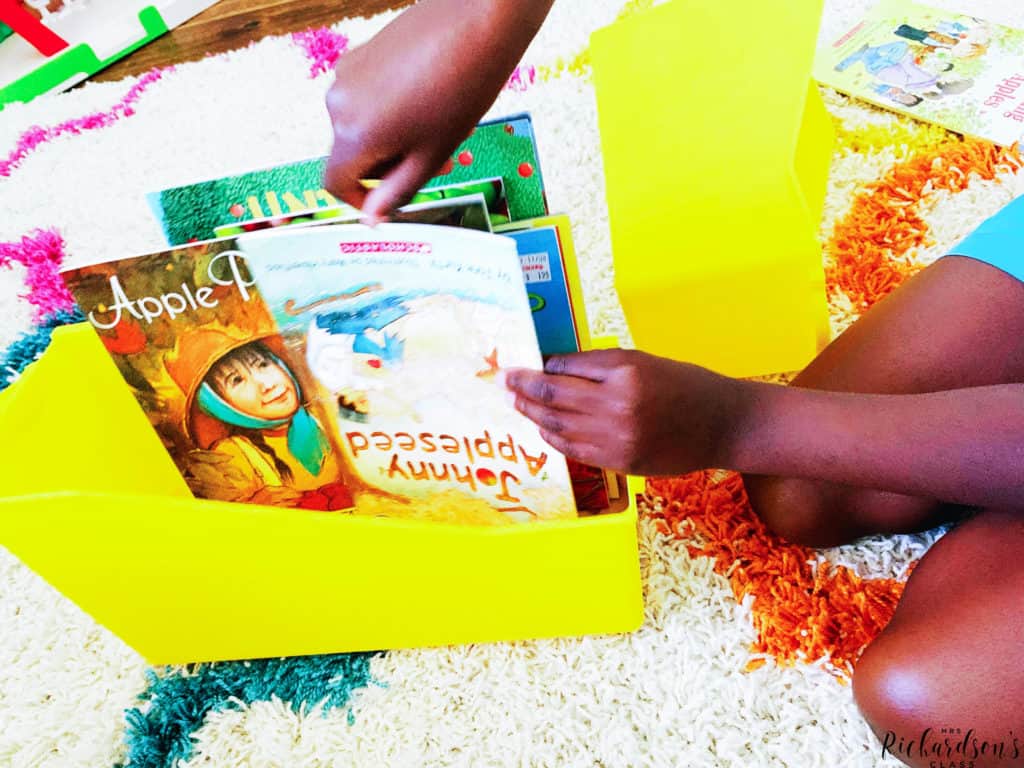
This tip might seem obvious, but it’s something I see kindergarten teachers sometimes forget to do! Besides books from the classroom library and book boxes with books from guided reading, try to include other options. At the beginning of the year especially, kindergarteners can have a hard time in the independent reading center because they go through books so quickly.
One easy option is to save mini-readers you might make in science or social studies and put them in students’ book boxes, too. These books are probably ones students can read (or “picture read”) because you have gone over it with them a few times.
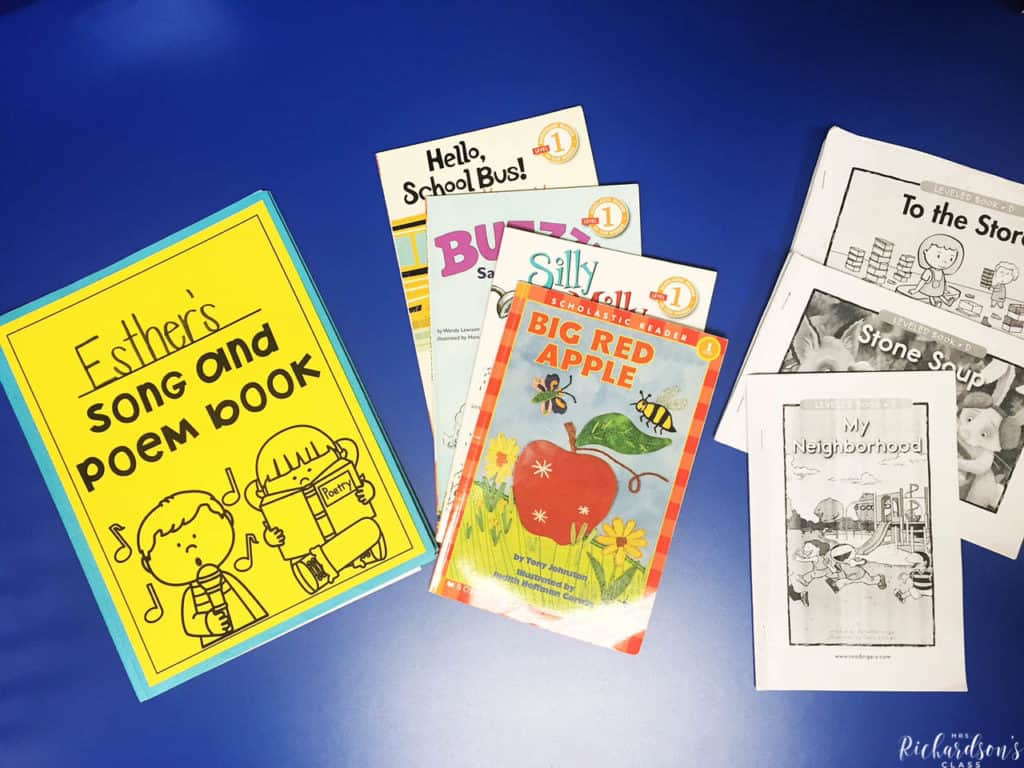
Another option is to grab books from the school library every other week or so. If we were studying plants, I’d try to grab some fiction and nonfiction books to include in the classroom library for students to pick from. Even if we didn’t read them aloud, new books are always fun to look at and read.
Finally, try putting your shared reading poems in a folder and adding the new ones all year long. Often, kindergarteners love the songs and poems we go over each week. They’ve learned them, have found sight words, and enjoy them. You can make a class folder of them all, or you can have each student put their copy of the shared reading poem in their own folder.
By making a space that’s unique to independent reading center, or just different than where they usually sit, students are more engaged. You can add colorful rugs to your library that students can also take and read next to their table spot. Try adding a fun lamp that students can turn on or comfy pillows to relax with.
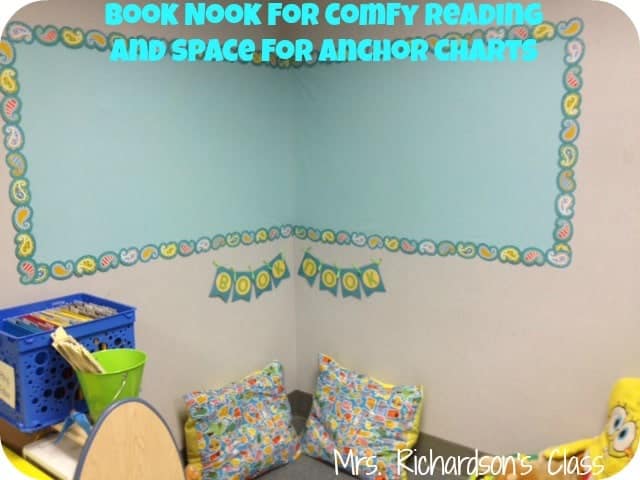
Keep a basket of beanie babies (or other stuffed animals) near the classroom library. When students are in independent reading center, they can choose an animal to be their reading buddy. Students can lay with their buddy or whisper read to it. It’s super fun and is always a hit with students! It also helps keep students in this center because they know they have to stay on-task to keep their reading buddy.
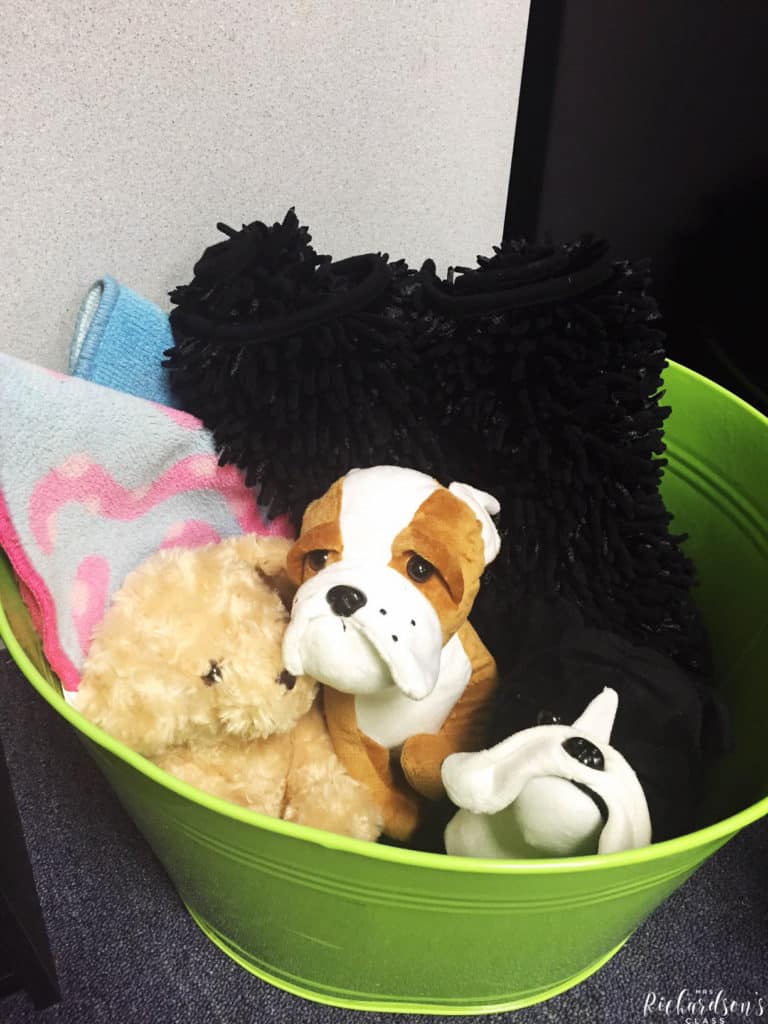
If you have kindergarteners who read and write on a first and second grade level, consider extending this center. You can have students jot down questions they had while reading, record a new word they learned, or write a brief summary. The goal of this center is reading, so keep the writing extension brief.
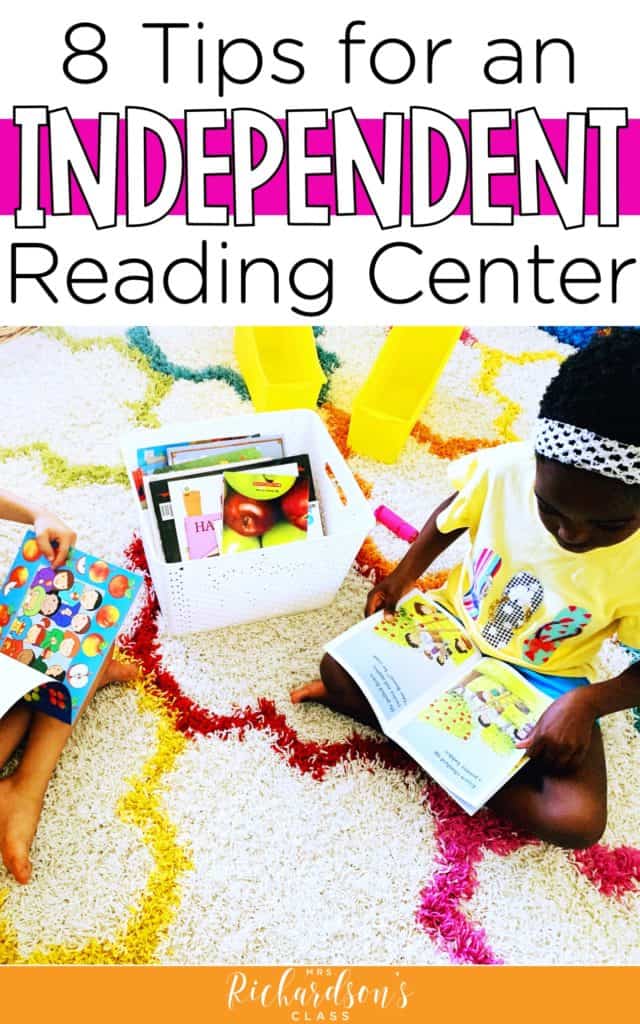
pin it
Remember there is no wrong way to do independent reading center, unless it’s not working for you and your students. If it’s not, try implementing one of these tips and see if it helps. Keeping kindergarten students in an independent reading center takes time. Don’t feel like you have to start with 15 minutes. You can start with eight to ten minutes and have them build up to 15. Keep it simple.
If you’re looking for more helpful tips about literacy stations and all things balanced literacy, check out my Facebook group Balanced Literacy with Mrs. Richardson’s Class. Join us, ask any questions you have, and share any of your best tips! We love community!

Want to use the latest research to boost your readers during small groups? This FREE guide is packed with engaging ideas to help them grow!

I’m a K-1 teacher who is passionate about making lessons your students love and that are easy to implement for teachers. Helping teachers like you navigate their way through their literacy block brings me great joy. I am a lifelong learner who loves staying on top of current literacy learning and practices. Here, you’ll find the tools you need to move your K-2 students forward!
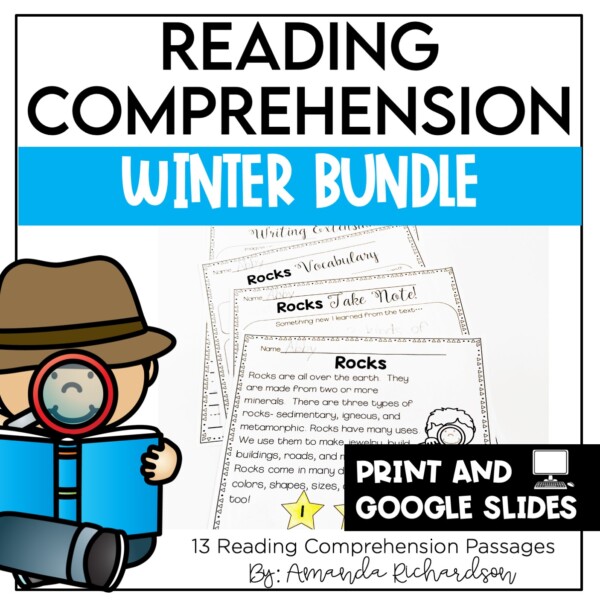


| Cookie | Duration | Description |
|---|---|---|
| cookielawinfo-checkbox-analytics | 11 months | This cookie is set by GDPR Cookie Consent plugin. The cookie is used to store the user consent for the cookies in the category "Analytics". |
| cookielawinfo-checkbox-functional | 11 months | The cookie is set by GDPR cookie consent to record the user consent for the cookies in the category "Functional". |
| cookielawinfo-checkbox-necessary | 11 months | This cookie is set by GDPR Cookie Consent plugin. The cookies is used to store the user consent for the cookies in the category "Necessary". |
| cookielawinfo-checkbox-others | 11 months | This cookie is set by GDPR Cookie Consent plugin. The cookie is used to store the user consent for the cookies in the category "Other. |
| cookielawinfo-checkbox-performance | 11 months | This cookie is set by GDPR Cookie Consent plugin. The cookie is used to store the user consent for the cookies in the category "Performance". |
| viewed_cookie_policy | 11 months | The cookie is set by the GDPR Cookie Consent plugin and is used to store whether or not user has consented to the use of cookies. It does not store any personal data. |
